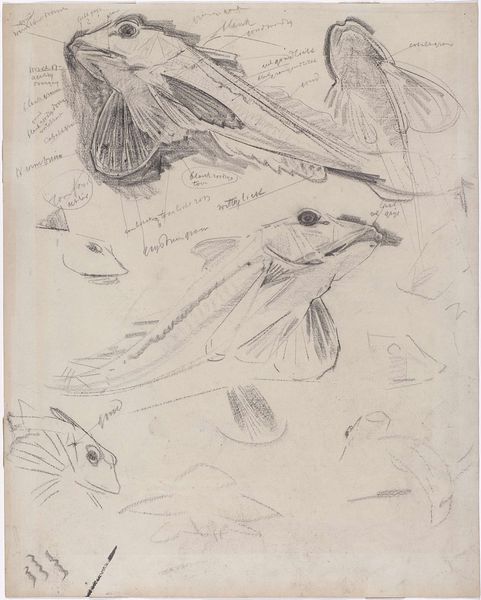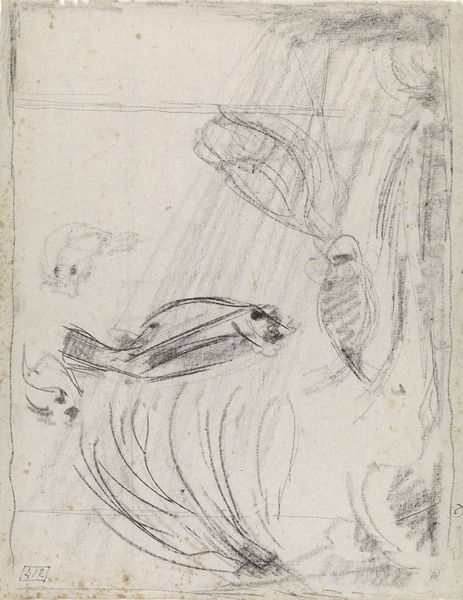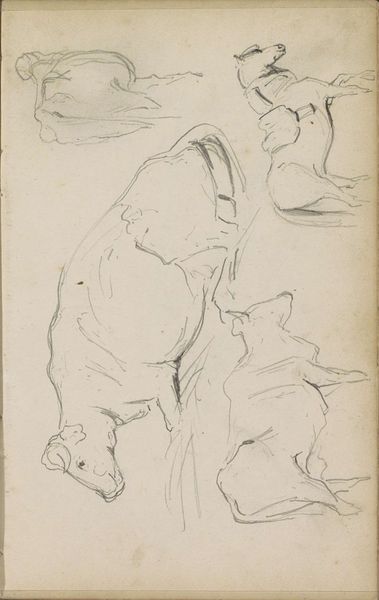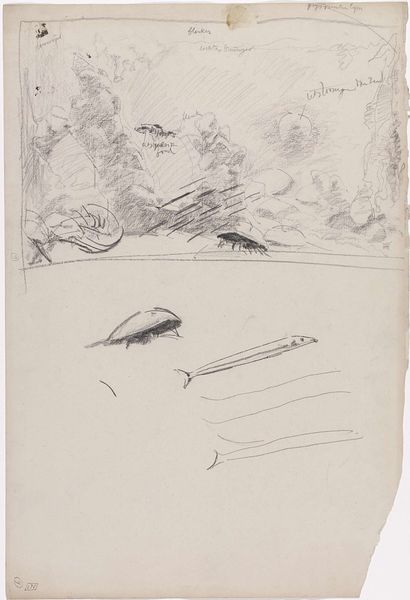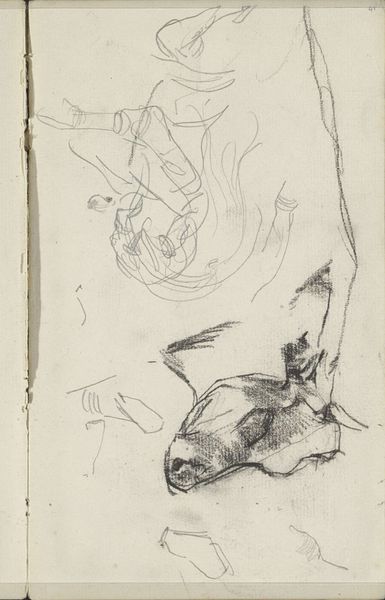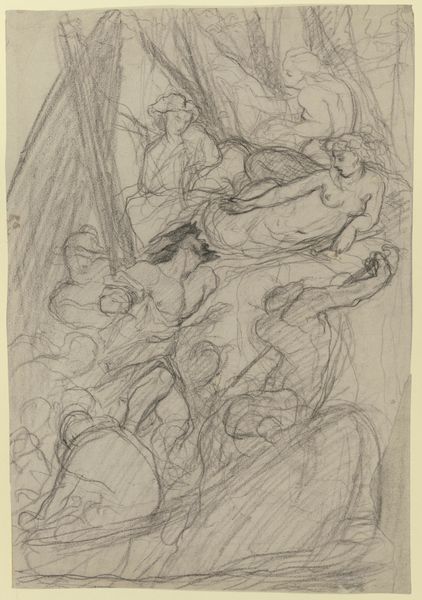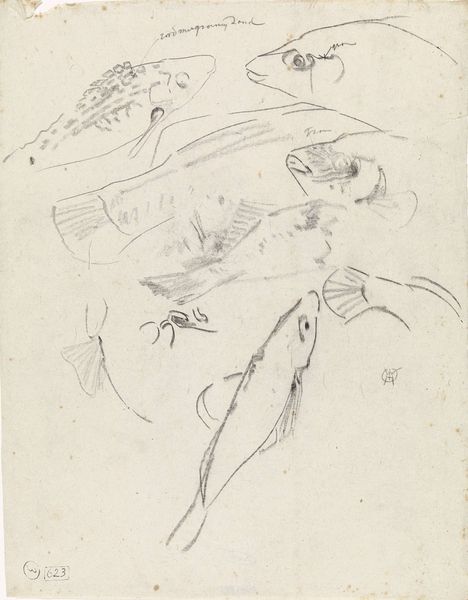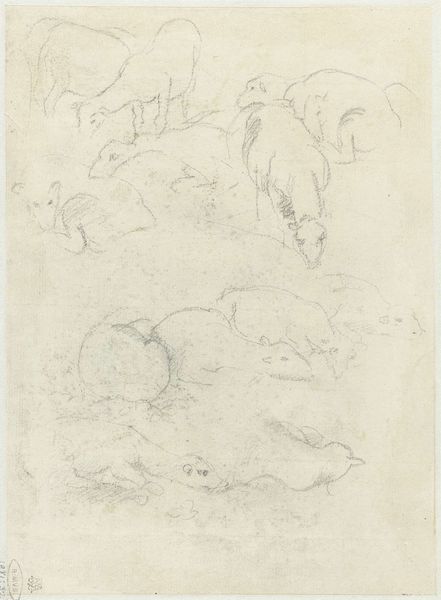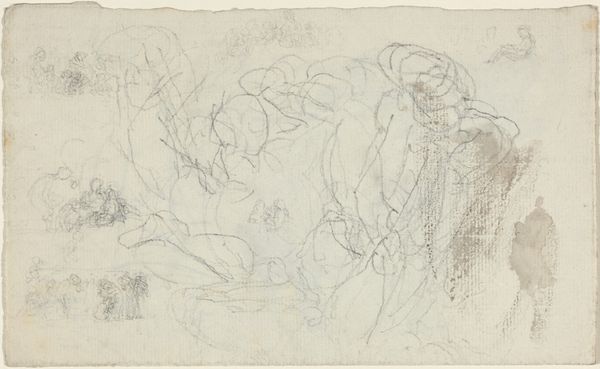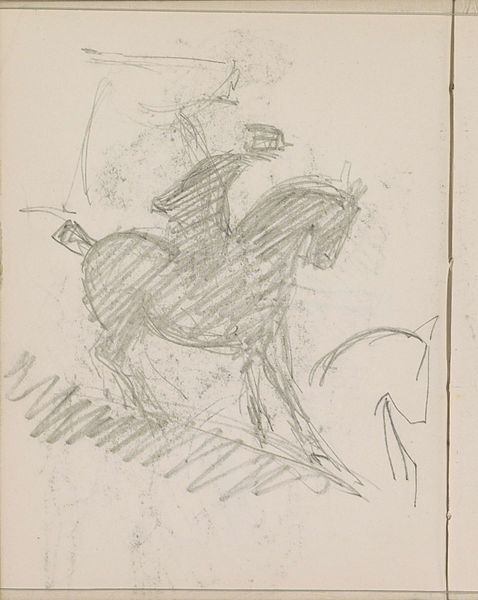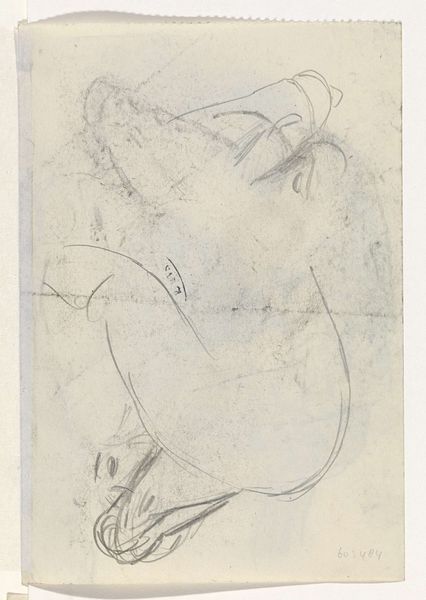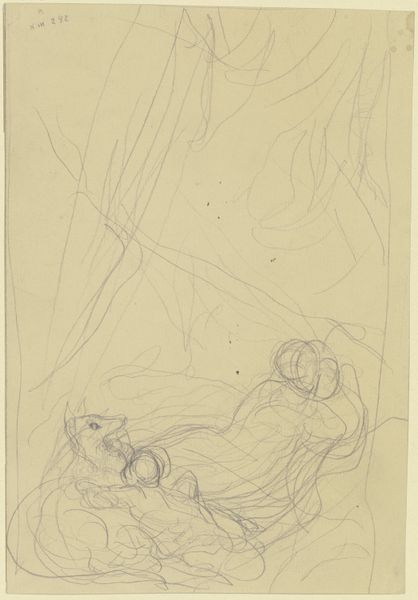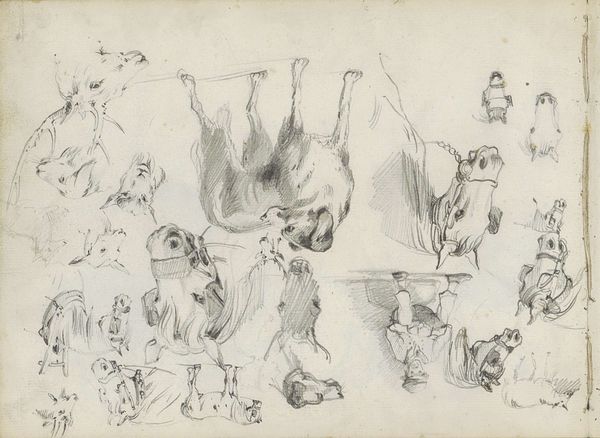
Dimensions: height 393 mm, width 260 mm
Copyright: Rijks Museum: Open Domain
Curator: Looking at this pencil and ink drawing from between 1876 and 1924, "Vissen in een aquarium" by Gerrit Willem Dijsselhof, I immediately notice how delicate yet dynamic it feels. Editor: Dynamic is a great word. The energy in those sketched lines makes me think about the artificial environment and how that translates to an anxiety, or a forced performance on behalf of these animals trapped for display. Curator: Precisely! Notice the technique itself—the sketch is not about realistic depiction, it's more of an impression, even suggestive. Given the context of the time, aquariums were emerging as these new spectacles of nature tamed by human control, often used as educational and entertainment tools for upper-class audiences. Editor: So, this loose drawing style is definitely reflective of Impressionism. I mean, we see how the artist captures light and movement with such economical strokes, the very medium mirrors the fluid subject. Tell me more about the role of materials here and their societal relevance during Dijsselhof's time. Curator: Paper, pencil, and ink were inexpensive materials making it accessible. Drawing as a medium was viewed as a preliminary exercise; so, in his art production, Dijsselhof blurred traditional artistic hierarchies, especially given his exploration of stylized natural themes connected to decorative arts, like printmaking. Editor: I see it as a societal commentary on the construction of entertainment and leisure, those captured animals reduced to pen lines dancing within a defined space. I like the duality the materiality adds to the topic: something disposable capturing what is already disposed of its own element to become an attraction. Curator: And thinking about institutions such as the Rijksmuseum holding it now adds another layer of meaning! Editor: It really invites us to reconsider how art itself can be a critical observation of society. I’m left considering how artistic representations, especially those captured with modest tools, reveal complex social, environmental and political contexts.
Comments
No comments
Be the first to comment and join the conversation on the ultimate creative platform.
